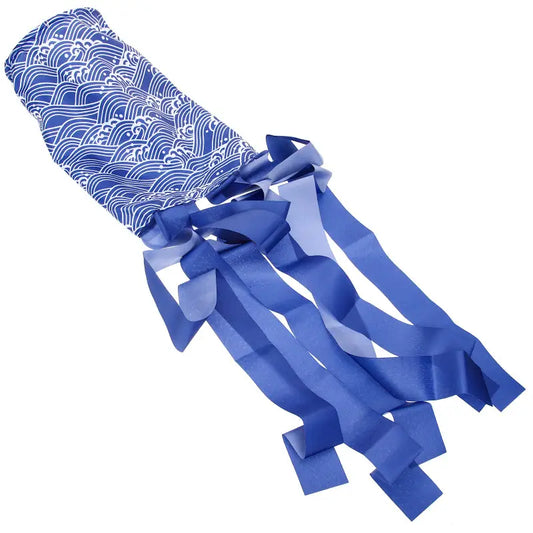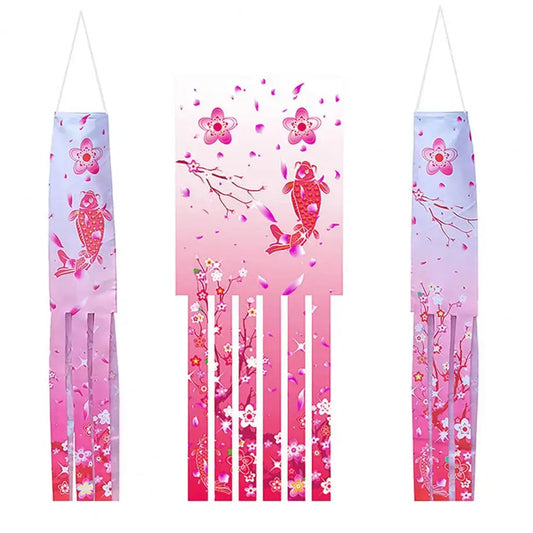Soar with Tradition: Welcome to the World of Koinobori
Step into a world where heritage dances with the wind. Welcome to our collection of Koinobori — the iconic Japanese carp streamers that bring joy, strength, and color to homes, gardens, and celebrations worldwide. These vibrant windsocks are more than decorative items; they are powerful symbols of perseverance, vitality, and family.
Rooted in centuries-old traditions and celebrated during Japan’s Children’s Day (Kodomo no Hi) on May 5th, Koinobori are flown to honor the health and happiness of children. Crafted in the form of koi fish — revered for their strength and ability to swim upstream — each streamer represents a family member and carries blessings for courage, growth, and success.
Whether you’re celebrating a special occasion, decorating a cultural space, or simply embracing the joy of movement and color, Koinobori connect past and present in a striking display of artistry and meaning. Ready to let your spirits soar?
The Meaning Behind the Streamers: What is a Koinobori?
Koinobori (from "koi" meaning carp, and "nobori" meaning flag or streamer) are traditionally hung on poles outside homes and buildings throughout Japan in late April to early May. They celebrate strength of character and the power to overcome adversity, traits personified by the koi fish.
Each streamer typically comes in a specific order:
| Color | Represents |
|---|---|
| Black | The father |
| Blue or Green | The eldest son |
| Red or Pink | The mother |
| Other Colors | Additional children |
Made of weather-resistant cloth, nylon, or paper, modern Koinobori range from minimalist and contemporary to ornate and traditional. They can be flown outdoors on long poles or used indoors as wall hangings, mobiles, or festive decor.
Whether displayed in full sets or as individual pieces, these streamers are a celebration of resilience and renewal.
Beyond the Wind: Why Koinobori Are So Special
Koinobori aren’t just beautiful to look at — they tell a story. With each flutter and flow in the breeze, they honor cultural pride, family bonds, and the idea that anyone can rise above their challenges. The symbolism embedded in these streamers is rich, inspiring, and cross-generational.
-
Symbol of Strength: Inspired by koi that swim upstream against strong currents.
-
Cultural Treasure: A staple of Japan's Golden Week and an enduring folk tradition.
-
Family Focused: Each fish celebrates an individual, bringing meaning to the display.
-
Global Appeal: Loved by schools, communities, cultural events, and families worldwide.
-
Visual Wonder: Eye-catching colors, patterns, and motion make them ideal decor.
They evoke emotion and foster connection, making them ideal gifts for new parents, cultural collectors, educators, and anyone drawn to Japanese heritage.
Decorating with Meaning: How to Display Koinobori
Koinobori can bring life, movement, and intention to any space — inside or out. Whether you're celebrating Children’s Day or simply love Japanese design, here are creative ways to fly your streamers with purpose:
| Location | Display Tips |
| Garden or Balcony | Hang from poles, flagpoles, or trees for full wind movement. |
| Indoors | Suspend from ceilings, curtain rods, or staircases for playful elegance. |
| Schools or Cultural Centers | Use during heritage events, language festivals, or art displays. |
| Children’s Rooms | Decorate with bright koi for educational and inspirational charm. |
| Parties & Events | Add a colorful focal point for birthdays or seasonal gatherings. |
Mix and match sizes and colors to create a cascading or thematic display. For extra effect, consider complementary Japanese elements like paper lanterns, origami cranes, or calligraphy prints.
A Perfect Pairing: What Goes With Koinobori?
Enhance the beauty and cultural significance of your Koinobori display with these thoughtfully chosen additions. Together, they create immersive, joyful spaces full of meaning and artistry.
| Item | Complements Koinobori With... |
| Japanese Lanterns | Soft illumination and traditional festival vibes. |
| Bonsai Trees | Adds natural beauty and Zen atmosphere. |
| Scroll Art or Tapestry | Ties the story of the koi to the aesthetic of the room. |
| Paper Crafts (Origami) | Connects tradition to modern creativity. |
| Seasonal Florals | Cherry blossoms or irises evoke Japanese seasonal themes. |
These combinations help create cultural corners in homes, educational spaces, or event venues. Whether subtle or bold, each element enhances the presence of Koinobori and enriches the story they tell.
Catch the Wind: Why Koinobori Deserve a Place in Your Life
Koinobori are more than decorations — they're declarations. Symbols of hope, family, perseverance, and joy, they connect generations and inspire awe with their elegance and energy. Whether fluttering in springtime breezes or hanging proudly year-round, they embody the spirit of growth and celebration.
From their humble origins to their global popularity, Koinobori remind us to strive upward, flow forward, and embrace the colorful challenges of life. Ideal for collectors, decorators, educators, and anyone seeking inspiration from tradition, these iconic streamers are as meaningful as they are mesmerizing.
Let your spirit rise and your space come alive. Bring home a Koinobori, and fly the flag of hope, culture, and joy.











